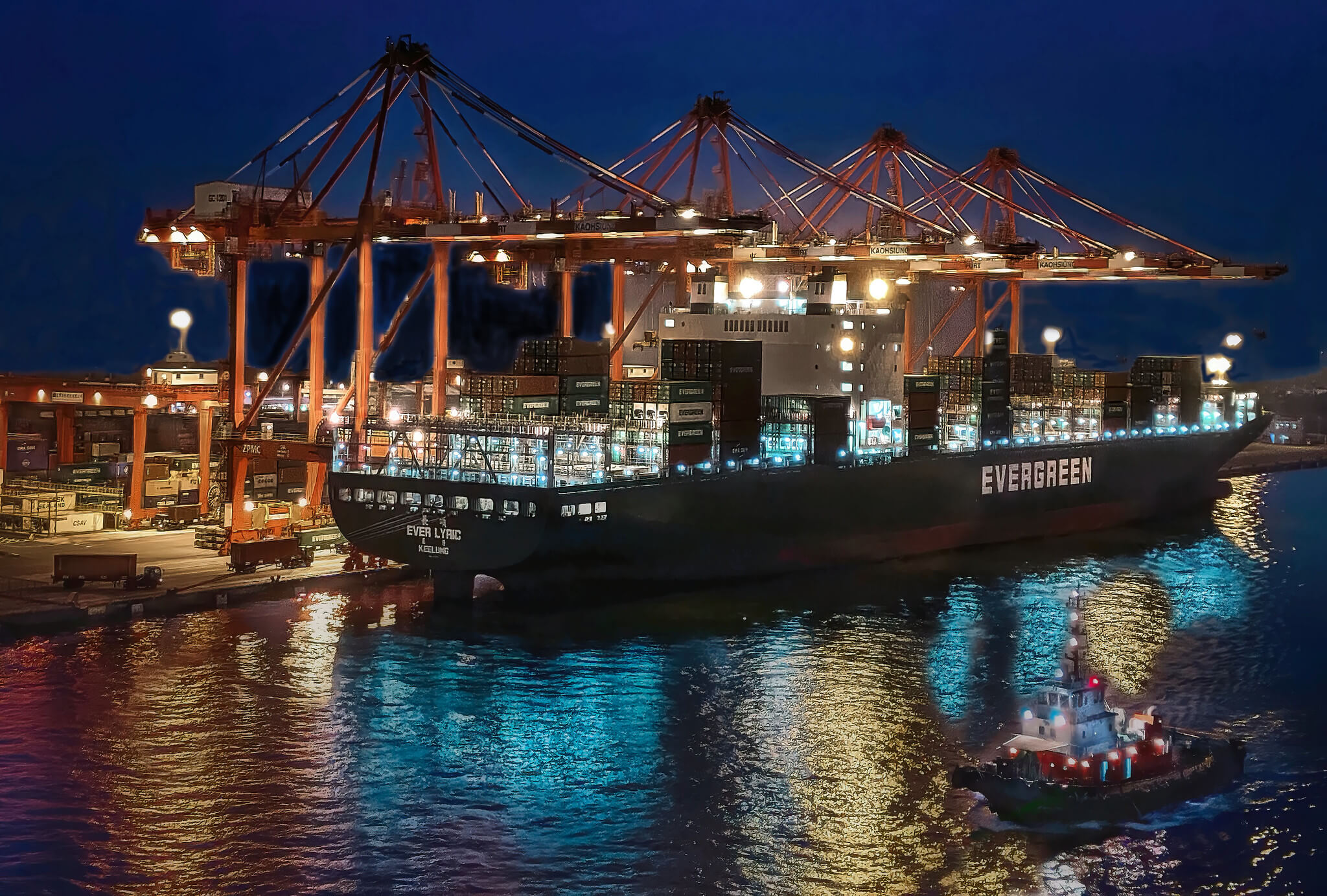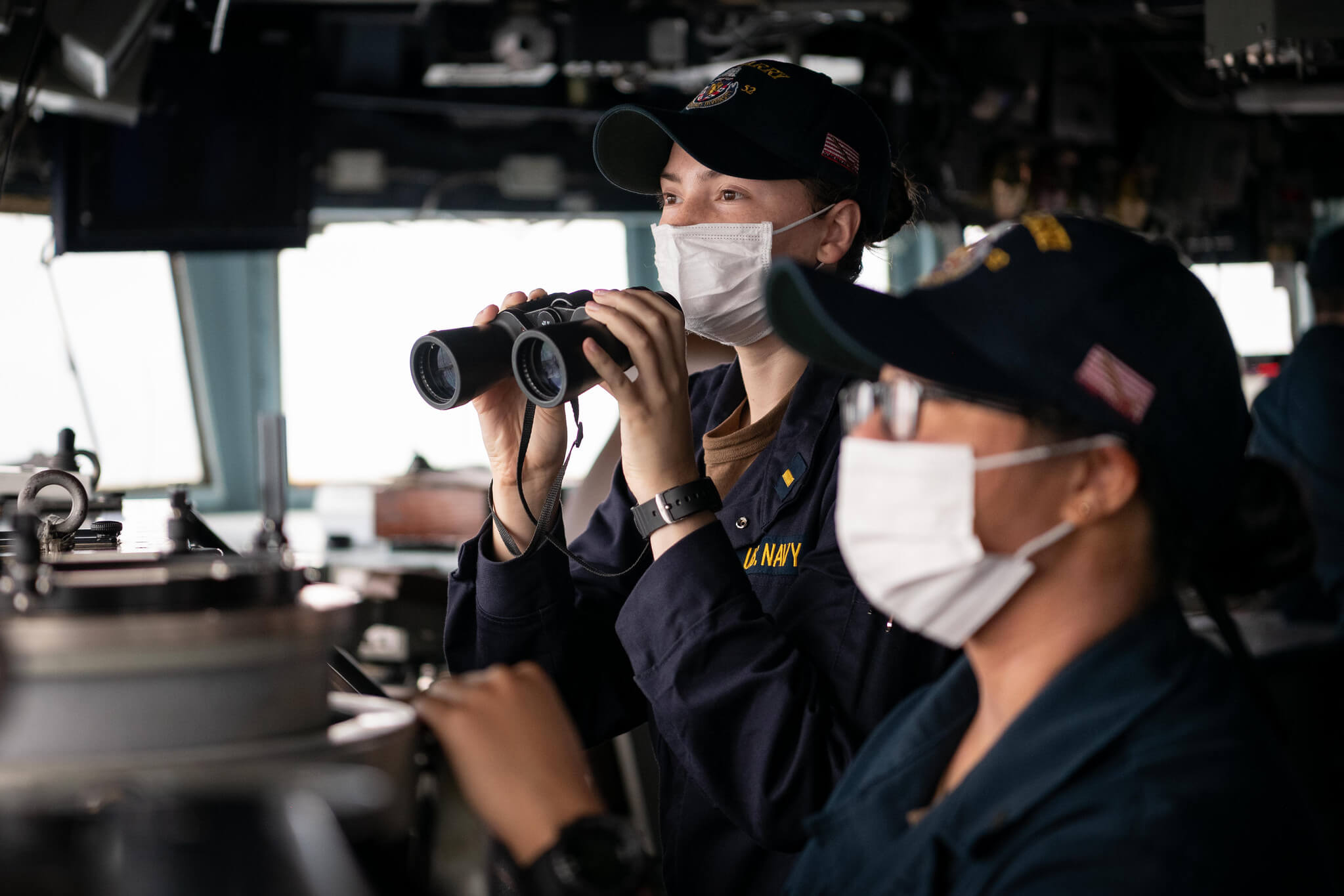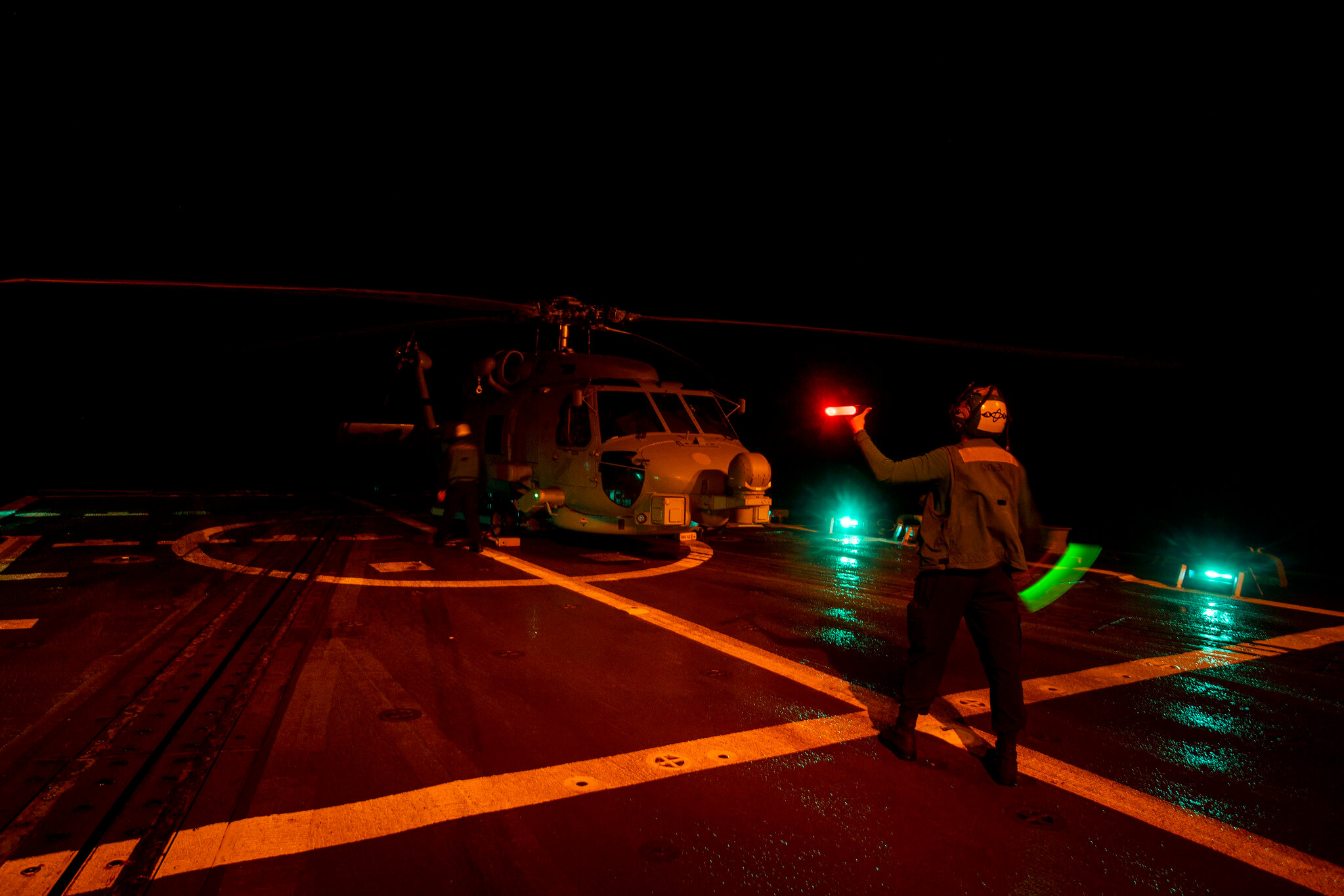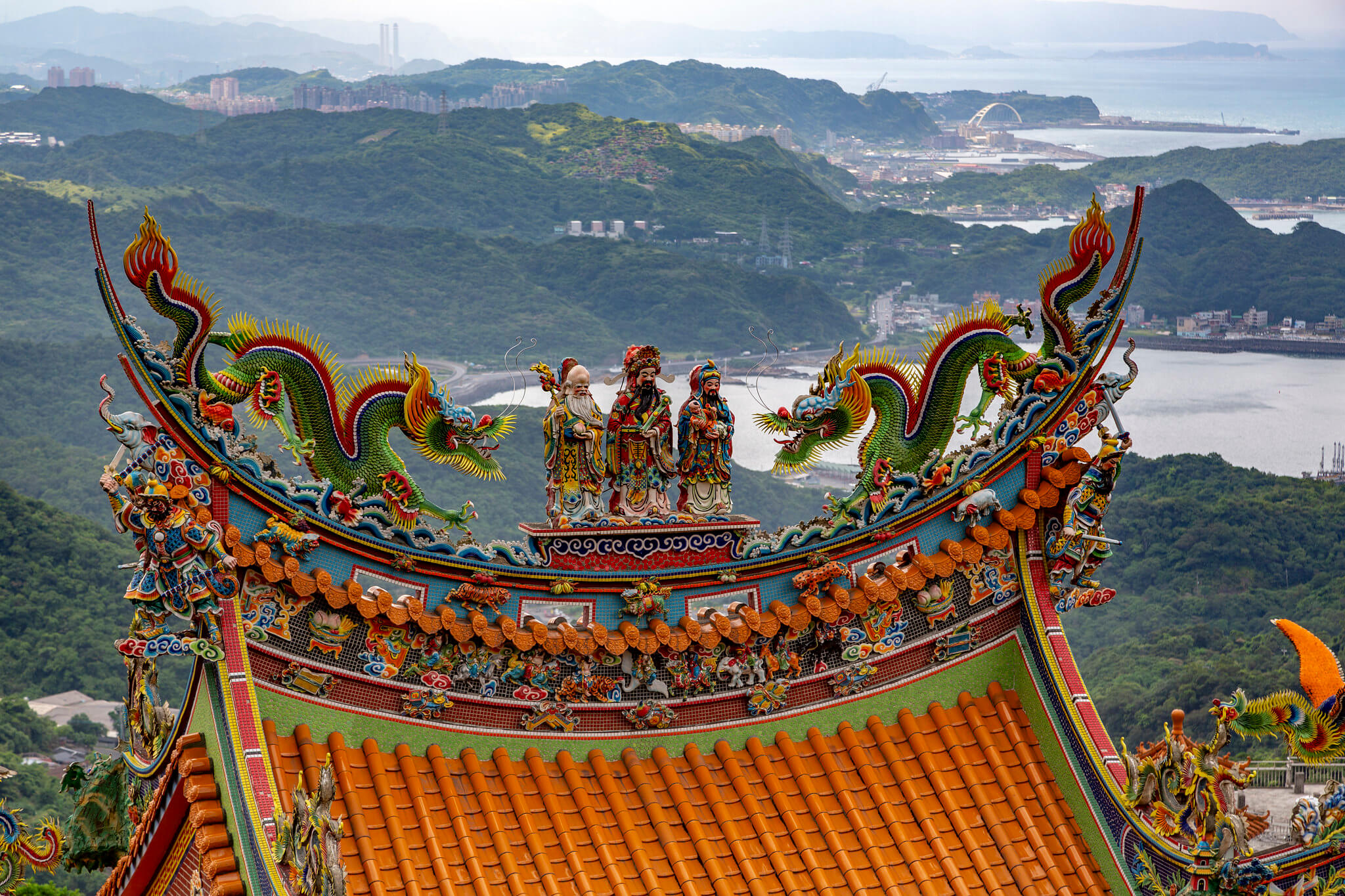
Chinese war on Taiwan now more likely than ever
Speculation about the odds of war between China and Taiwan seems to be growing by the day. In this second part of a trilogy on the China-Taiwan conflict, I-Chung Lai (President of the Taipei-based Prospect Foundation) examines the current discussions in Taiwan on the likelihood and timing of a military conflict initiated by China, and concludes that the Taiwan Strait’s security demands global attention.
In his speech on 9 October 2021, celebrating the 1911 Xinhai Revolution which ended China’s last imperial dynasty, Chinese President Xi Jinping vowed to reach “peaceful unification” with Taiwan under a “one country, two systems” arrangement.1
Still, Xi has also repeatedly warned against “Taiwan independence”, arguing that the current Taiwanese government is the strongest enemy of Chinese unification and the biggest hurdle in the way of a “great rejuvenation of the Chinese Nation”.2 These kinds of statements reaffirm Xi’s clear understanding that as long as Taiwan remains independent, and unconquered, China’s dream of national greatness can never be realised.
Recent political trends in Taiwan do not bode well for Xi: Taiwanese opinion polls consistently show that only 7.1 per cent of the populace is leaning towards unification with China. This is a marginal group compared to the majority who prefers either the status quo (55.7 per cent), or is leaning towards full-fledged independence for Taiwan (31.5 per cent).3
Since support for unification with the People’s Republic of China (PRC) is waning, Beijing seems to have concluded that time is not on their side, and that a different strategy vis-à-vis Taiwan may now be required.

A similar trend is clearly visible on the economic front: although exports to China (and Hong Kong) still dominate Taiwan’s overall external trade (43.9 per cent in 2020)4 , the emerging US-China trade war has turned the tables on Beijing and Taipei.
In the past, when China was its biggest export destination, the fear in Taiwan was that its economy could be held hostage by China should things go south. Today, the same figure actually indicates a new phenomenon of ‘reverse dependence’, where China’s economic dependency on Taiwan has grown. Taiwan exports large volumes of microchips and other high-tech semiconductors products to China, which are considered essential to China’s ambition to compete with the US and Europe. At the same time, Taiwan’s outward direct investment to China has decreased for several years in a row.5
It hardly needs reminding that for decades, China has considered its economic-financial ties with Taiwan as a key strategic weapon pressuring the Taiwanese people to accept Beijing’s plans for unification. This strategy came close to being successful after the global financial crisis of 2008, when China was considered the last resort by many Taiwanese companies who lost a big chunk of their traditional export market in the US and Europe.
Domestic sentiment in Taiwan is adamantly set against Beijing’s unification goal
Taiwan’s Ma Ying-jeou administration (2008-2016) encouraged Chinese tourism as an important source of income that could help sustain Taiwan’s faltering economic engine. These were the times when Chinese tourists and officials engaged in buying sprees in Taiwan, demonstrating their impressive purchasing power. Today, the situation in Taiwan is markedly different, and the admiration for China’s economic system has largely waned.
From a Chinese perspective, all this does not offer a rosy picture. Domestic sentiment in Taiwan is adamantly set against Beijing’s unification goal, which is backed by a resilient domestic economy that is less-and-less dependent upon its trade with the PRC.

Since China can no longer lure (or force) Taiwanese people to accept unification through economic means, Beijing seems to draw the conclusion that it should change tack. It is adopting a strategy of military provocation and coercion, combined with an assertive (and global) diplomatic isolation campaign –all aimed to force the Taiwanese people to give up their resistance.
This explains why today, we witness a noticeable increase in the frequency and scale of military harassment by China’s People’s Liberation Army (PLA) towards Taiwan. For now, Taiwan’s President Tsai Ing-wen is unlikely to cave under Chinese military pressure, which is growing by the day.
China escalates its military harassment
In the first five days of October 2021, the PLA’s Air Force flew no less than150 sorties with military aircraft, violating Taiwan’s airspace (or air defence identification zone; ADIZ).China started these provocations in 2016, but this was the most flagrant infringement ever.
The much less debated presence of the People’s Republic of China’s vessels drifting within Taiwanese waters also sets a worrying trend.6 All these aerial and naval skirmishes take place against the backdrop of a looming military conflict between China and Taiwan. President Xi publicly refuses to rule out the use of force to settle the “unification issue” with Taiwan, and public statements from Beijing officials are becoming ever more belligerent.
A war of deliberation, of diversion, or from miscalculation?
Chinese experts openly discuss the options for a forceful unification with or without military means.7
These debates follow three different scenarios: a war of deliberation, a war of diversion, and a war from miscalculation. Each of these scenarios is based on different causes for a war and assumes different political dynamics.
In a war of deliberation, China is expected to launch a direct military campaign on Taiwan to force unification. Since unification (with Taiwan) is such a ‘sacred goal’ for the Chinese Communist Party (CCP), failure would not be an option. This scenario requires thorough preparation and the mobilisation of a massive amount of military resources.
Given the growing distrust between China and the US (and the West in general), miscommunication and misreading hostile intentions could well result in escalation towards a military conflict in the Taiwan Strait
In a war of diversion, a completely different logic is followed. This scenario argues that President Xi could decide upon military action towards Taiwan should he feel threatened within his own CCP leadership circle. It is well known that Xi’s primary goal is to continue his political grip on China, but that he has created many domestic enemies due to his relentless anti-corruption campaign against his fellow CCP colleagues. Military action on Taiwan could drive the entire party to rally around Xi, meanwhile distracting the attention of the general public away from the failing domestic policies.
The third scenario suggests a possible war from miscalculation. Given the growing distrust between China and the US (and the West in general), miscommunication and misreading hostile intentions could well result in escalation towards a military conflict in the Taiwan Strait. Ever since Xi took office in 2013, China has made it clear that it will respond to every perceived hostile action in its strategic vicinity. Over the years, we have already seen numerous skirmishes between China and Taiwan (as well as the US and other countries) that are prone to military escalation.

Timing of a Chinese invasion
As the level of Chinese military harassment increases dramatically, Taiwan is now debating the likelihood and timing, as well as the manner in which a possible cross-strait military conflict could be initiated by China. Conventional wisdom suggests that – based on the natural terrain for the landing operation and the known amphibious capability of China’s PLA – a Chinese invasion could not be conducted successfully, with limited costs.
What about the likelihood and the timing of such an invasion? The political calendar of China’s Communist Party would make an invasion unlikely in the next two years.
China hosts the Winter Olympics in Beijing in Spring 2022. Moreover, President Xi really wants to secure his third term as the leader of the CCP, which will be decided at the twentieth CCP Congress to be held before the end of 2022.Ruling for a third consecutive term would break with past practices and thus be deemed controversial. President Xi may therefore be disinclined to embark upon a risky military adventure before his third term is officially confirmed.
All this implies that the likelihood of a cross-Taiwan Strait military conflict could rapidly increase after 2022. In January 2024, presidential elections will be held in Taiwan. The intensification of Chinese military harassment against Taiwan since mid-2016 suggests that Beijing may be disinclined to tolerate the election of another Taiwanese president who is against “unification”. Faced with this option, Beijing may well choose to escalate its military provocations, and even engage in all-out military conflict, to sway the Taiwanese electorate towards “unification”.
US presidential elections are scheduled for November 2024. Within Taiwan, the theory is discussed that Beijing might want to use military coercion vis-à-vis Taiwan during the presidential power transition in the US, when the president is at his weakest and distracted by domestic power struggles. Therefore, timewise, the year 2024 offers itself as one of the more likely, dangerous strategic windows for a cross-Taiwan Strait military conflict initiated by China.
Taiwan’s Ministry of National Defence has already declared that the PLA could successfully launch an amphibious operation on Taiwan as early as 2025
Another likely period of military action by China’s PLA towards Taiwan would be 2027, driven by the political pressures on Chinese rulers during the twenty-first CCP Congress which is scheduled at the end of that year.
It is widely believed that President Xi will have to deliver on his political promises and ambitions and show why he should deserve a (possibly) fourth term in office. It is also believed that the Chinese military advantage over Taiwan could be dwindling after 2027, since the advanced weaponry Taiwan has now purchased(and/or built itself) will be deployable around that year.

Although there are different assessments within the US military establishment regarding the likelihood of a Chinese invasion of Taiwan over the coming six to seven years, Taiwan’s Ministry of National Defence has already declared that the PLA could successfully launch an amphibious operation on Taiwan as early as 2025.
In conclusion, the strategic consensus in Taiwan is that while the timing and scale of a Chinese military operation against Taiwan remains unclear, a future PLA operation will inevitably escalate into a full-fledged occupation campaign of the island.
How will the United States respond?
In their war plans against Taiwan, Chinese military planners are already making provisions for the likely US involvement in this armed conflict. It is generally believed that concerns and respect by the PLA for the US military capabilities in the Western Pacific is the main reason a war has been averted in this region over the past fifty years.
But this American deterrence posture is gradually crumbling. China’s political and military elites estimate that the military ‘power gap’ between China and the US – which has always been to the advantage of Washington – has shrunk quite dramatically since the global financial crisis of 2008.
Since 2008, China’s economy is booming, leaving the West (including the US) economically behind. This has given China the opportunity and self-confidence for more assertive, and even adventurous actions in its direct strategic vicinity and beyond.
Beijing elites believe the US decline is now inevitable, and that it is just a matter of a few short years before the trends of Western decline and China’s rise will intersect – whereafter China will emerge as a global superpower. This so-called ‘power transition theory’ (developed about fifty years ago by A.F.K. Organski) is often referred to by leading Chinese academics and Communist Party analysts.
The CCP makes active use of the narrative “China rises and the US falls”
Ever since President Xi took office in 2013, his “China Dream” aimed at the “great rejuvenation of the Chinese nation” has been given a boost by the (alleged) on-going decline of the West and the rise of China.
Beijing’s initial proposition to establish a new model for great power relations between China and the United States was aimed at stabilising relations with Washington, and to find a new balance of power in the region. Xi also thought this new power balance could forestall a possible preventive war (of sorts) initiated by the administration of Donald Trump on China.
Since then, the CCP makes active use of the narrative “China rises and the US falls”, using it to explain the motives behind Washington’s policies towards China. For example, the US-China trade war is believed to be caused by Washington’s fear of “losing to China”.
The seemingly chaotic response to the COVID-19 pandemic by the US and its European (liberal-democratic) allies has strengthened China’s conviction that its governing system is more effective than its Western counterparts, and that Beijing’s governing philosophy can be the model for the future of other countries across the globe.

We are currently witnessing a China that is confident it can and will surpass the US – economically and militarily – in the foreseeable future, but also feels insecure in its own capability to overcome serious domestic problems which may be of a structural nature and do not lend themselves for quick fixes.
The current Chinese leadership hyper confidence regarding the PLA’s military prowess in its direct vicinity (including towards Taiwan), and China’s prospect to overtake the US as the next global economic hegemon stand in stark contrast to the lack of ideas to solve the many severe, and possibly volatile domestic problems. This cocktail of military confidence and domestic insecurity is a potential danger to the region, since it makes decision-making in Beijing hard to predict.
Taiwan Strait’s security demands global attention
There is no doubt that the situation surrounding the Taiwan Strait will continue to be extremely volatile for the years to come. It is also true that the odds of China embarking upon a military conflict with Taiwan will grow.
The consensus in Taiwan remains that the chance for an all-out Chinese military invasion of Taiwan remains low till late-2022; all bets are off for 2023 and beyond. The time-window of 2024-2027will be especially perilous.
What will happen to Taiwan in the years to come will inevitably affect the whole Indo-Pacific area. The stakes are high. Security in the Taiwan Strait is not merely a concern for China and Taiwan and cannot merely be managed using the Taiwan-China-US strategic triangle.
On the contrary: the future of the Taiwan Strait’s security is bound to affect the economy and strategic landscape on a global scale. The Taiwan Strait issues demand global attention, and hence require a global solution: not just involving the US, Taiwan and China, but with other regional stakeholders such as Japan and Australia, and extra-regional stakeholders such as ASEAN, India and the European Union, as well.
- 1Reuters, ‘China's Xi vows 'reunification' with Taiwan’, October 9 2021.
- 2Global Times, ‘Xi stresses peaceful reunification, calls Taiwan secessionists 'serious threat' to national rejuvenation’, October 9, 2021.
- 3According to an opinion survey published by the Election Study Center of the National Cheng-Chi University (NCCU) in July 2021, the majority (55.7 per cent) favoursthe “status quo”; support for independence (“independence as soon as possible, or maintaining the status quo for now and moving toward independence later”) stands at 31.5 per cent; and support for unification (“as soon as possible, or moving toward unification later and maintaining the status quo now”) stands at 7.1 per cent.
- 4Xinhua, ‘Taiwan's exports to mainland hit new high in 2020’, September 1, 2021.
- 5See latest figures from the Overseas Chinese and Foreign Investment Commission here.
- 6There are frequent eyewitness accounts spotting PRC drilling vessels operating near the midline of Taiwan Strait, in the vicinity of Pescadore Island and the Matzu Island. This August, the Japan Defense Ministry also claimed to witness a prolonged presence of Chinese destroyer in the waters between Taiwan and the Yunakuni Island, the southernmost territory of Japan located just 110 miles east of Taiwan. Those Chinese naval activities represent a new level of escalation of a well-planned intimidation and coercion campaign against Taiwan.
- 7lan xiaowe, ‘藍孝威,「談兩岸統一,王在希再提北平模式,以戰迫和、以武促統」,中時電子報,2020年11月27日。’, China Times, 27 November 2020; Yang Sheng and Zhao Yusha, ‘Possibility of peaceful reunification with Taiwan is diminishing: experts’, Global Times, 5 December 2020.






0 Reacties
Reactie toevoegen